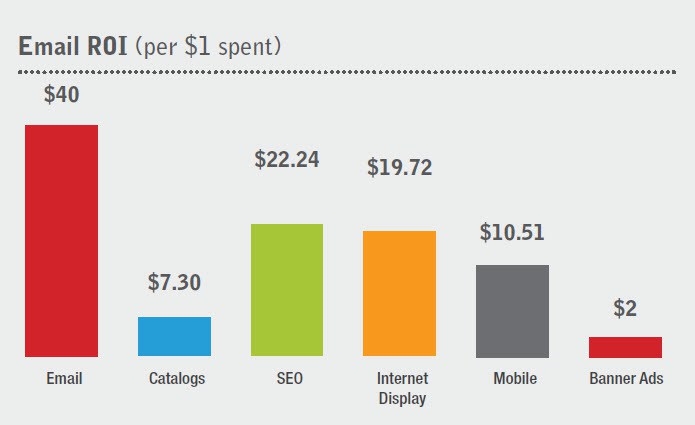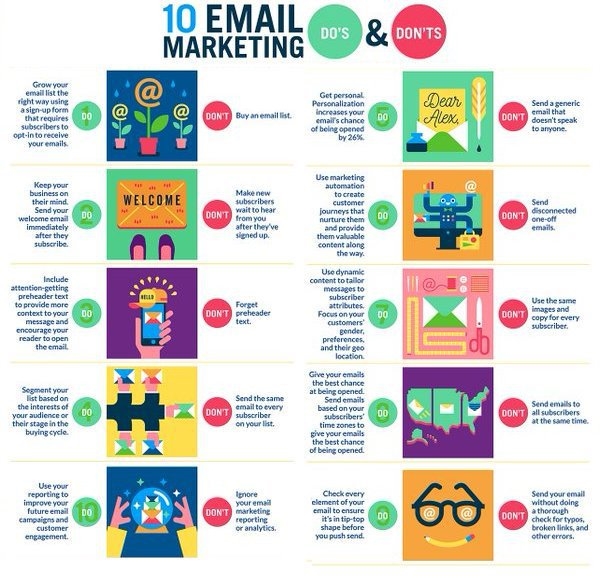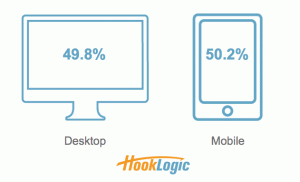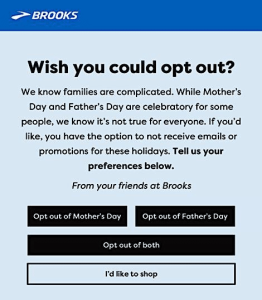— March 5, 2018

Successful email marketing is a critical, and often overlooked, element of digital marketing.
According to an article on Inc:
But after a couple decades of Nigerian prince schemes, Spanish lotto scams, and mountains of unsolicited spam (which is never a good marketing tactic), how do people feel about email now? Is it still a worthwhile tactic for small-business owners and marketers to pursue?
The simple answer is yes.
Take a look at the graphic below and you’ll see how important successful email marketing is to your bottom line–generating nearly 2X the ROI of the next more cost-effective tactic.

Image courtesy of Data Mentors
Successful email marketing
Successful email marketing requires 2 tactics: 1) list building and 2) email campaigns.
So, you’ve really got your work cut out for you. Here are some tips to get you started:
List building
Before you can have a successful email marketing campaign, you need a good list. In the bad old days before CAN-SPAM, you could simply buy a list and spam a bunch of folks with your message. Some experts advised against such “cold messaging”, but it worked well if you were very selective in purchasing a list of likely buyers. List buying was an art in those days and I got paid a lot of money to guide businesses on which list purchases were likely to result in high returns. And, selling lists is what kept a lot of small, specialty magazines in business–they provided unique access to highly targeted subscribers.
Now, of course, you can’t buy lists, so you have to develop your own (and comply with CAN-SPAM regulations which you can find by following the link above). Since, the law makes your email client (for instance, Constant Contact, AWeber, or MailChimp) responsible for your violations, they can get hit with a big fine, so they’re invested in keeping you honest in this.
So how do you go about building a list?
- Include your sign-up form everywhere-on the home page and each page of your website, in your store (if you’re a brick and mortar), at events, on social platforms …
- Offer something (like an ebook, coupon, etc) in exchange for signing up for your email list
- Don’t ask for information you don’t need so it’s fast and easy for visitors to sign up. Maybe all you need is an email address and name. Don’t forget you can get additional information after they sign up.
- Make your sign-up form obvious without interfering with user experience (I hate those popups that block content until you either sign up or x out). I prefer a small band at the bottom of the screen that asks for an email address or something that pops up as the visitor starts to scroll away from your site. Remember, your website is critical for SEO and you don’t want to mess with anything that reduces visits, bounces, or time on site.
- When you send an email, include social sharing and the ability to subscribers to forward your email to a friend. These are great ways to build your list.
Email marketing campaigns
Your email client should make it easy to create attractive and professional email campaigns to subscribers. I use AWeber because of their flexibility and ease of creating campaigns (they recently added drag and drop capabilities).
Here are some things to keep in mind as you craft your campaigns:
- Your goal. What do you hope to accomplish with the email.
- Timing — how often, time of day, day of week, etc. Sure, email is available whenever a user wants to view it, but it’s more likely to get opened soon after it’s sent. The better your timing, the better your open rate.
- Optimize open rates with a great pre-header, the description users see when they check their email. Check out the image below:

- Make your email easy to read and inviting on multiple screens (especially mobile) with great design.
Keys to successful email marketing campaigns
1. Strong content
Just like everything in marketing, the message is everything.
- Make your content (both text and images) attractive and inviting, use lots of white space and a little humor doesn’t hurt. The more an email looks like a personal conversation with a friend, the better it will perform.
- Personalization doesn’t end with including the person’s name. Make the email look like it was designed especially for each reader.
- Don’t waste your readers’ time with nonsense: say what you need and provide links to more information.
2. Timing
You don’t want to overload your readers by sending too many emails, but you want to use your email marketing to build loyalty and engagement with your target audience. That’s a tight balancing act.
And, there’s no one-size-fits-all answer to this question. A good gauge of the right frequency comes from analytics. If your open rates drop or you start getting complaints or a bunch of folks unsubscribe, you’re probably emailing too often. If you’re not getting folks unsubscribing or complaining, you could probably send more frequent emails.
The key is to send emails when you have something worth saying to your audience.
3. Use marketing automation
Marketing automation often receives a negative knee-jerk reaction because it sounds like you’re treating your subscribers as robots who all get treated the same. But, it’s actually the opposite. Whether you prefer Salesforce or Hubspot or some other marketing automation tool, successful email marketing requires you send the right content to the right people at the right time and that means using marketing automation.
No marketing automation platform works well unless you spend time keeping information up-to-date to ensure the content the subscriber receives is targeted to their product interests, stage in the customer journey, and other key elements, like gender.
4. Use analytics
The wonders of digital marketing provide a plethora of metrics which should guide every marketing decision you make. Here are some metrics you should watch:
- Subscriber data such as new subscribers and unsubscribes
- Performance of your email form–I do this by setting up goals in Google Analytics, but AWeber also shows me how many times my form was shown and how many subscribers were generated. I periodically do A/B testing to determine the optimal form, placement, etc.
- Campaign performance–how many opens, how many clicks, and, if you’ve installed tracking codes, goal completions based on each campaign.
5. Mobile-friendly
Making your content mobile-friendly is a key to successful email marketing. According to Buffer, 47% of emails are opened on a mobile device. Here’s their advice for making your content easier for mobile users:
- Convert your email to a one column template for an easy mobile fix.
- Bump up the font size for improved readability on smart phones.
- Follow the iOS guideline of buttons at least 44 pixels wide by 44 pixels tall.
- Make the call-to-action obvious and easy to tap. Above the fold is preferable.
- Consider ergonomics. Many users tap and scroll with their thumb, so keep important tappable elements in the middle of the screen.
The do’s and don’ts of successful email marketing
Here’s a nice infographic if you want more keys to successful email marketing:

Infographic courtesy of: Campaign Monitor
Digital & Social Articles on Business 2 Community
(115)
Report Post









